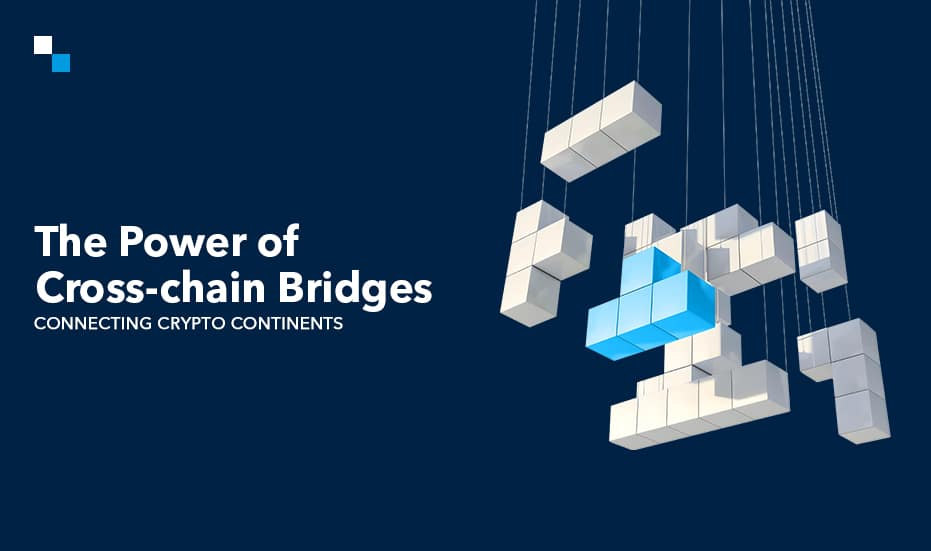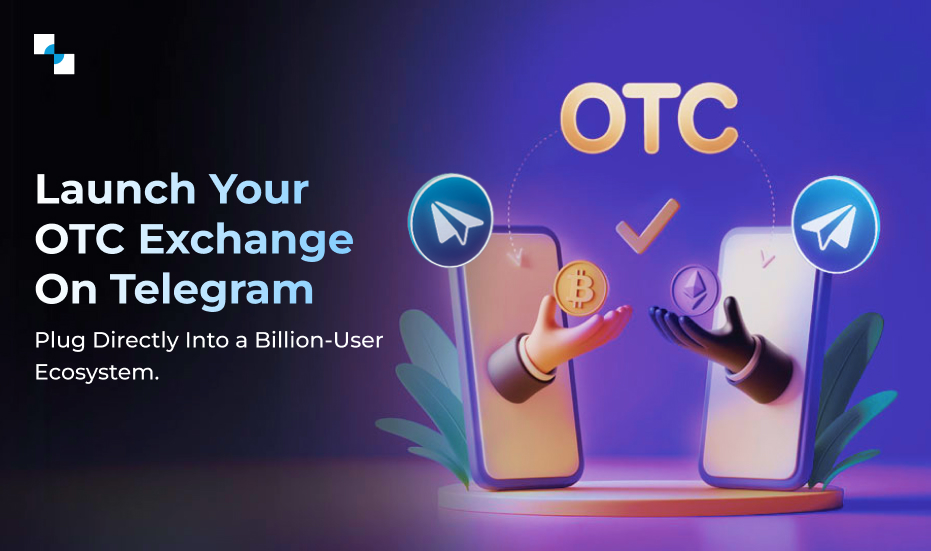In the boundless, ever-expanding universe of technology, individual blockchain networks have long existed as isolated islands with unique ecosystems, rules, and native assets. Just as the ancient Silk Road connected various civilizations and facilitated the exchange of goods, ideas, and cultures, cross-chain bridge platform solutions have become the important connective tissue of the crypto world. These technological wonders show the way into a quite new dimension of blockchain interoperability, opening new frontiers for innovation and collaboration.
The Need for Cross-chain Bridges
As the world of blockchain is evolving, we are ready to infuse diverse blockchain networks in a single platform to fulfill the specific needs of both businesses and platform users. But, why do we need that? Ethereum offers the complete functionality of smart contracts but has a low scalability level. Binance Smart Chain allows fast and cheap transactions but is only partially decentralized. Polkadot bets on interoperability, whereas Solana tries to be the throughput champion. Every single one of those chains has its pros and cons; very often, users want to use multiple chains for certain benefits they will get.
That’s where cross-chain bridges come in. A cross-chain bridge development company creates solutions that enable smooth asset and data movement from one blockchain network to another. In fact, such bridges really serve as translators as they help communicate between otherwise incompatible systems and allow peer-to-peer transactions.
The Mechanics of Cross-chain Bridges
Before we dive deeper into cross-chain bridge development solutions, we need to understand that cross-chain bridges typically operate using one of three mechanisms:
1. Lock and Mint: In this model, a user locks tokens in a smart contract on the source blockchain. Simultaneously, wrapped versions of those tokens are minted on the destination blockchain as a form of IOU. When the user wants to head back into the original blockchain, this wrapped token is burned to get back the original coins.
2. Burn and Mint: This is where tokens are burnt on the source blockchain, after which exactly the same amount of native tokens get re-issued on the destination blockchain. This approach ensures that the total supply of tokens across both networks remains the same.
3. Lock and Unlock: Here, tokens are locked on the source blockchain, and the same native tokens are unlocked from a liquidity pool on the destination blockchain. This method often attracts liquidity on both sides of the bridge through economic incentives.
How does It work?
At their core, multi-chain bridge platform development involves creating a set of smart contracts on both the source and destination blockchains. These contracts work in tandem to lock assets on one chain and mint equivalent representations on another.
When a user wants to transfer an asset from Chain A to Chain B, the process typically follows these steps:
- The user sends their assets to a smart contract on Chain A.
- This contract locks the assets and emits an event.
- A network of validators or oracles observes this event.
- The validators trigger a corresponding contract on Chain B.
- The contract on Chain B mints an equivalent amount of wrapped assets.
- The user receives the wrapped assets on Chain B.
This process can be reversed when the user wants to redeem their original assets, with the wrapped tokens being burned on Chain B and the original assets being unlocked on Chain A.
Types of Cross-chain Bridge Platform Solutions
The cross-chain bridge platform solutions have made the facilitation of assets and data within various blockchain ecosystems possible without any problem. This builds great utility of dApps and adds much value to users’ experience, too. Further below, we will explore the various types of cross-chain bridge platform solutions emerging in the market.
1. Trusted Bridges
Trusted cross-chain bridges are those relying on a central authority or intermediary for facilitating transactions between blockchains. These solutions require, for most cases, the transacting parties to have confidence in a third-party operator of such assets over a given transfer. While trusted bridges may be simple and very easy to use, they could pose some security problems given that they employ a single point of control. This aspect aside, numerous projects still resort to this kind of solution because it avails faster transaction time and lower fees. Among the developers looking to balance their speed and security in cross-chain bridge development solutions, trusted bridge platforms are always a priority; therefore, very well-liked.
2. Trustless Bridges
Opposite to trusted bridges, trustless bridges do not work with centralized intermediaries. These multi-chain bridge platform development solutions are based on smart contracts and cryptographic techniques in order for the transaction to be secured. They are decentralized, and the user has full control over his assets without any interference from the third party. Given their nature, they are generally considered more secure but can be much slower and more expensive, considering the difficulty of the base protocols. A developer of cross-chain bridges working with decentralized platforms would normally focus on trustless models for bridges to enable greater security and more transparency.
3. Federated Bridges
Federated bridges are typically a group of chosen validators responsible for the validation and transfer between blockchains. In so doing, it strikes a balance between trust and centralization. The federated model offers greater security compared to trusted bridges and better performance than a fully decentralized solution. The application of the federated model will ensure scalability, security, and efficiency for numerous cross chain bridge platform solutions.
4. Multi-chain Bridges
Multi-chain bridge platforms enable the transfer of assets across more than two blockchains, extending the possibilities of flexibility and usability. Generally, multi-chain bridge platform development solutions are effective in facilitating dApps with multi-blockchain interoperability. One of the fast-growing fields in development involves multi-chain bridge platforms, where developers are in search of multi-chain solutions that could allow seamless communication among a wide variety of blockchain ecosystems. This would unlock broader access to DeFi and NFT by enabling cross-chain bridge development solutions with multi-chain functionality.
The Impact of Cross-chain Bridges
Before contacting a cross-chain bridge development company, you need to understand how cross-chain bridges are having a profound impact on the blockchain ecosystem:
- Improved Liquidity: One major improvement in the crypto space has been an improvement in liquidity; that is, bridges have availed the free flow of assets between chains.
- Improved User Experience: Instead of constantly switching over or trading the user assets, now they can access all the best features on several chains.
- Better Opportunities in DeFi: DeFi protocols are now able to tap into the liquidity and users of a great number of chains, allowing for better efficiency and diversification into various financial products.
- Accelerated Innovation: Applications can be developed by a cross-chain bridge development company that will make use of the powers of several chains; thus, the dApps are more powerful and flexible.
- Reduced Network Congestion: One great way that bridges prevent congestion on popular chains, such as Ethereum, is to distribute activity across several chains.
- Empowerment of Users: Cross-chain bridges do empower the users in providing flexibility to use multiple blockchain networks. This allows the user to tap into the unique features of chains, lower transaction fees, and speedier processing times of the various chains.
Key Features of Cross-chain Bridge Platform Solutions
- Multi-Chain Support: Advanced bridge platforms can support multiple blockchain networks to extend complex cross-chain interactions.
- Asset Agnostic: The best solutions available allow for the movement of several asset types, from simple cryptocurrencies and tokens to even complex NFTs.
- Security Considerations: One can be sure that Bridged assets will be safe because multi-signature wallets and decentralised governance are warranted with strong security protocols in place.
- Scalability: The efficient design of bridges will enable them to increase their throughput for transactions without sacrificing speed or security.
- Intuitive Interfaces: The user can easily initialize cross-chain transfers without highly technical knowledge with the use of user-friendly interfaces.
Conclusion
Cross-chain bridges play a significant role in the creation of an absolutely interoperable blockchain ecosystem, much like the Silk Road of history, where trade and culture successfully passed through. Enabling the easy transfer of assets and further improving interoperability between various types of blockchains, opens more avenues for innovation and collaboration. While the demand for cross-chain solutions is expanding day by day, the partnership with leading cross-chain bridge development company, Antier will enable you to harness the much-needed expertise in handling such a complex landscape. Our all-covering cross-chain bridge development solutions ensure scalability and high efficiency for your projects, along with tight security. Want to experience it? Contact us today!








